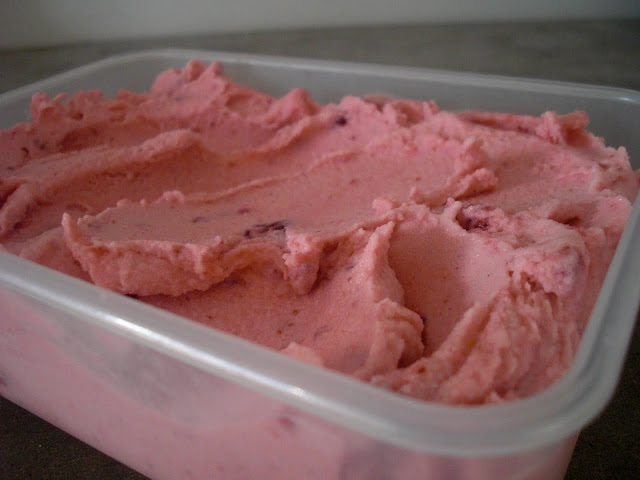
We picked the first strawberries out of our little jumbled patch in the yard this week. They were like glowing jewels hiding beneath the mess of mother and daughter plants out there. I was so excited to find a ripe one, that I showed my two year old, we picked it, she devoured it, and started picking every nearly reddish one she could find. Not sure it was the best idea to let her in on the secret of the strawberry patch, since now, we probably won't have many berries that will actually make it to the fully ripened stage. But, the joy of seeing my kid outside, picking her own food, stuffing it in her mouth, walking around with the juice stained fingers to show for it, is all the satisfaction I need. So half ripened strawberries will have to do for this year in our little strip of earth in the city.

Growing your own strawberries:
If you want to grow your own berries it is really easy. They can grow in pots or in the ground. Ask at any garden center or nursery about different varieties of berries and how to take care of them. The "mother plants" send out runner plants called "daughter plants". I haven't quite found the time to figure out how to manage these well, whether to remove the daughters or let them grow. I have just let them run wild, but that isn't really the way to get the most berries. Sorry not to be able to help out more on this one, but a quick google search will yield some answers, them you'll have to start paying close attention to which plant is which. Growing them in a row is better than the mess of a patch I have, but for now we are getting berries, and so for now, we are a happy bunch.
Picking your own berries:
I love the site pickyourown.org where you can search the whole country for great places to pick fruits and vegetables. They have a lot of detailed info on each farm and their growing practices. It is good to ask if the berries have been sprayed with chemical pesticides or fungicides. Many farms and orchards have good, more sustainable growing practices but cannot afford to be certified organic. If they say they are an IPM farm that stands for Integrated Pest Management which means that they try to use a more holistic approach to farming than conventional farms to avoid using a lot of chemical fertilizers, pesticides or herbicides. It is still good to ask questions like "were the plants sprayed when the fruit was on them?" or anything else you want to know, since there is a very wide and unregulated range of IPM practices out there.
Also, look around for local strawberry festivals or special desserts at restaurants serving up seasonal local menus. Yum.













































